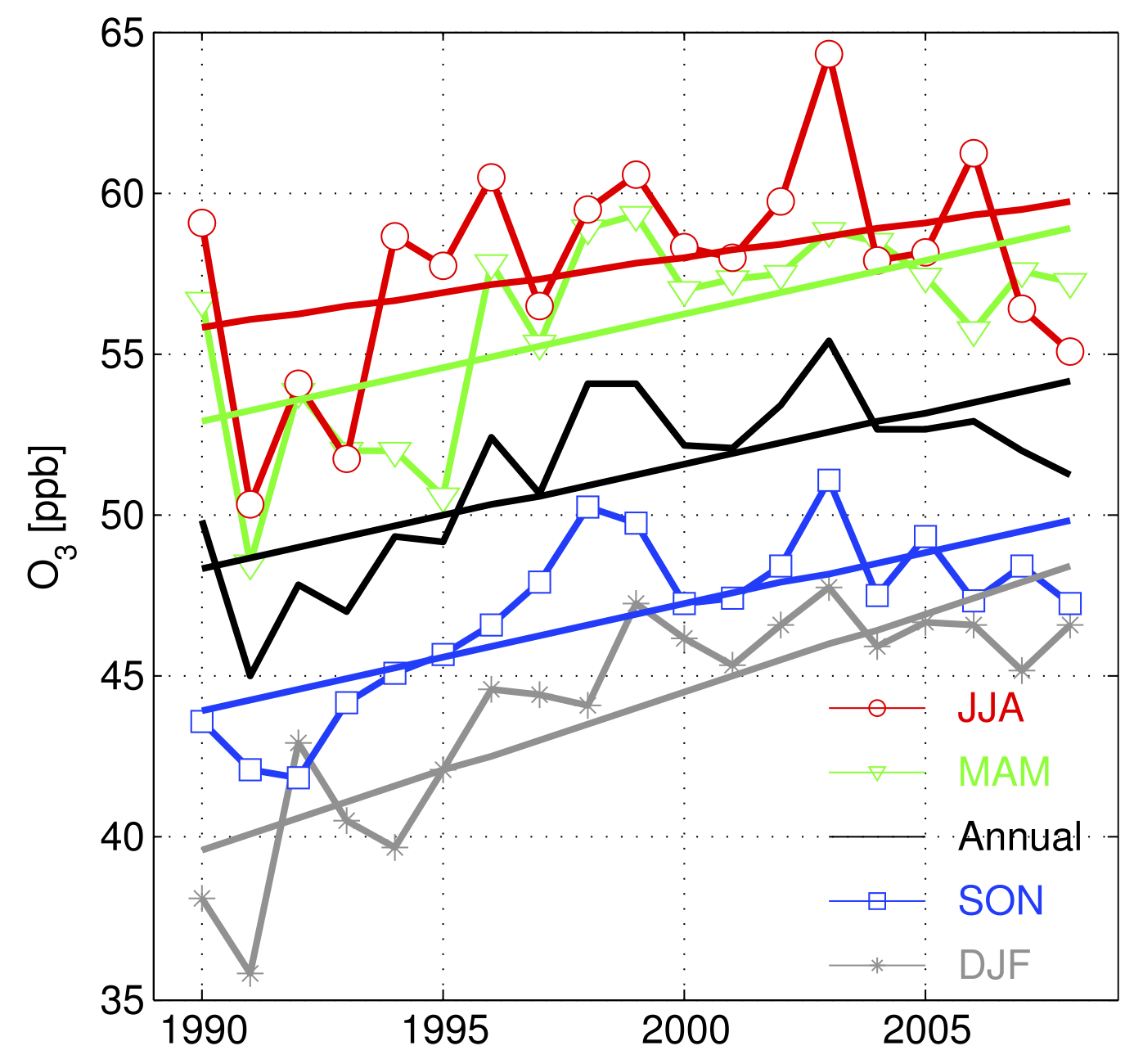European Tropospheric Ozone
Why has European free tropospheric ozone not decreased as expected?
The negative impacts of tropospheric ozone on human and ecosystem health have led to policy changes to reduce emissions of ozone precursor gases such as nitrogen oxides (NOx) and carbon monoxide (CO). Although emissions of these species have significantly decrease in Europe and North America since the early 1990s, observational data indicate that free tropospheric ozone over Europe has not decreased as expected (see figure). Previous studies suggest that transport of stratospheric ozone to the troposphere may have increased from the late 1980s until the early 2000s. However this is also a period over which ozone precursor emissions have increased significantly from the Asian region. Given the relatively long lifetime of ozone in the free troposphere (approximately 20-30 days), the burden over one continent can be affected by emissions from another. Thus, both changes in ozone transport from the stratosphere and long-range transport from Asian source regions may have affected ozone in the free troposphere over Europe over the past three decades.

We analyzed free tropospheric ozone changes over Europe as observed at Jungfraujoch by means of backward trajectories (external page Cui et al., 2011). Furthermore, we use the global chemistry-climate model SOCOL to investigate tropospheric ozone trends over Europe during the recent past (1960-2010) and into the future (up to 2100). Sensitivity tests and ozone tracers are employed to help fully disentangle the effects of both long-range transport and input from the stratosphere (external page Revell et al., 2015). See external page Staehelin et al. (2017) for a recent review.